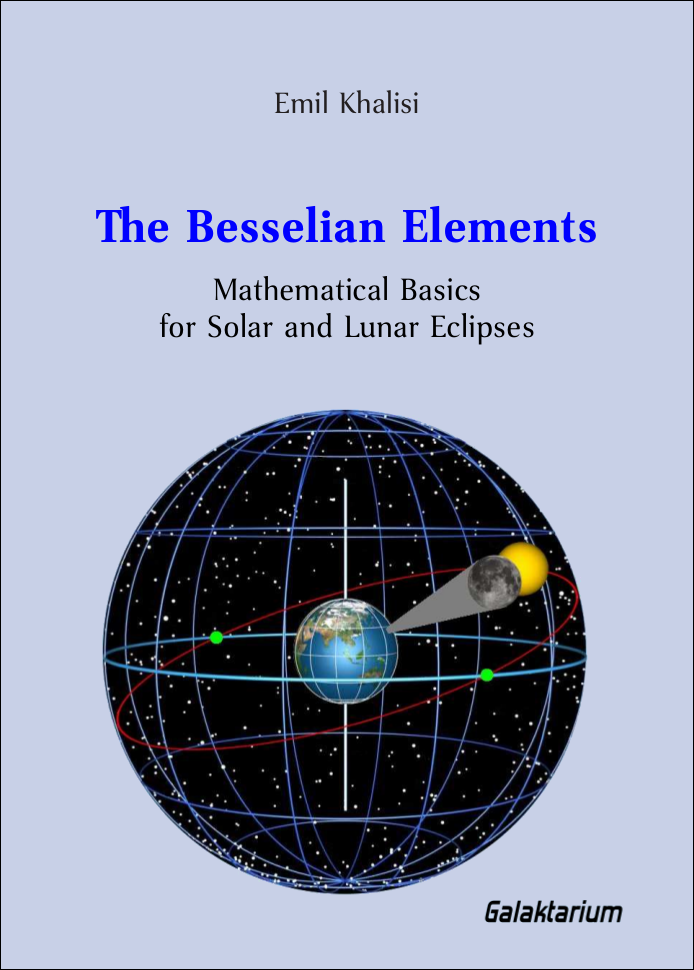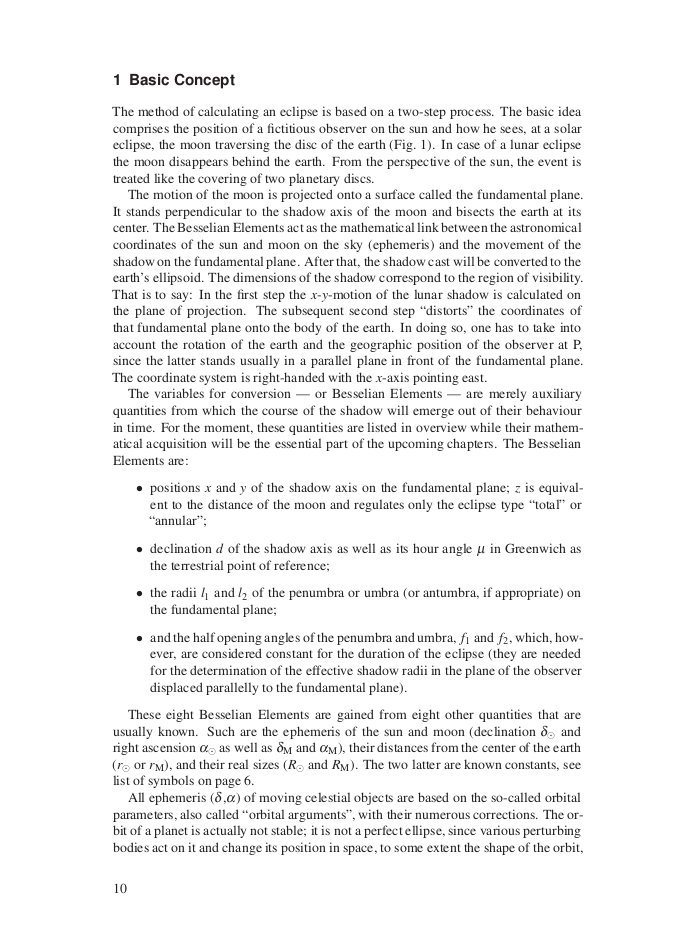This book provides the mathematical tools to compute the visibility conditions of an eclipse for any place on Earth, e.g. widths of the lunar shadow, contact times or magnitude. The formulae are an integral part of computer algorithms nowadays, however, only few really understand in detail what happens in a simulation. In addition to solar eclipses, the book deals with lunar eclipses and the tolerance limits for the occurrence of an obscuration. Sample calculations demonstrate the working method. It is a step-by-step guide to getting started with the basics of eclipse theory.
The work is a supplement to the author's Habilitation at the University of Heidelberg. A German version is also available.

Author: Emil Khalisi
© October 2022. Galaktarium.
ISBN 978-3-9822794-5-9
107 pages, 34 images, 9 tables. Technical book.
Format: 170 x 240 x 8 mm. Weight: 283 g. Paperback.

